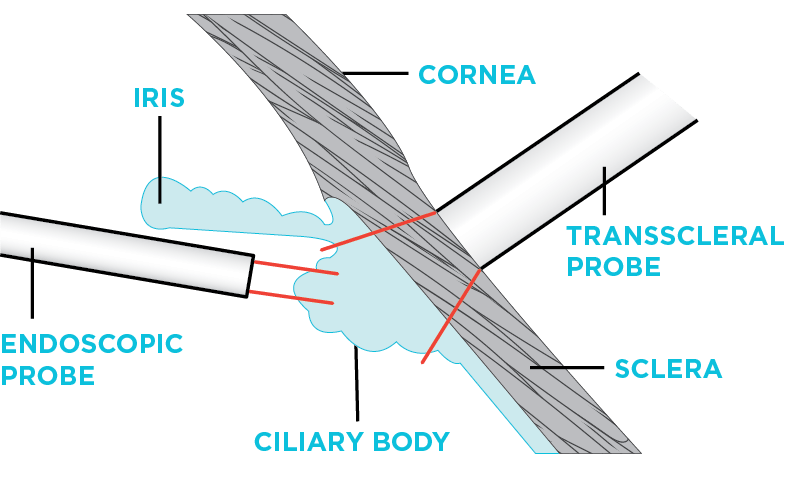Virtual Library | Glaucoma Surgical Treatments
If your pet has been diagnosed with glaucoma, diligent ongoing monitoring and treatment will be involved to maintain your loved one’s vision over time. There are several medical therapies and surgical treatment options, which will depend on the severity of the glaucoma, your pet’s age, whether other ocular problems are present, and the presence or lack of vision. Read on to learn about the vision-sparing surgical treatments available and the financial benefits of joining our Glaucoma Club.
← Flip through our digital brochure
Visit related pages for more information:
Your pet has been diagnosed with glaucoma, which will involve diligent ongoing monitoring and treatment to maintain your loved one’s vision over time. Initial medical therapy for glaucoma calls for intensive use of topical and oral therapy to help control the pressure in the eye. This can be highly effective in the early stages, but generally becomes less productive as the disease progresses.
For long-term control of glaucoma, surgical management is the best approach. There are several options, which will depend on the severity of the glaucoma, your pet’s age, whether other ocular problems are present, and the presence or lack of vision. Surgical procedures are primarily intended to either increase the flow of fluid out of the eye (shunt procedures) or reduce the amount of fluid production within the eye (laser procedures).
These vision-sparing surgical procedures are outlined on the following pages. And remember, you are not alone. Our Animal Vision Center of Virginia team is dedicated to help you find the best treatment solution for your pet and will be here with you every step of the way.
Join Our Glaucoma Club
For $50 a month, members will receive a wide range of benefits that include:
- 20% off all services (including surgery)
- Free monthly pressure check/medication evaluation ($23 monthly value)
- 50% off quarterly examination and full-day pressure curve ($57.50 quarterly value)
- Same day pressure check/emergency appointment with any concern for pressure spike
- After-hour emergency Telehealth consultations (evaluation of ocular photos when you can’t come to our practice)
Our team is committed to keeping your pet visual and comfortable, and we hope the benefits featured here will help to alleviate some financial burden you may face.
If you’re interested in joining the Glaucoma Club, please call us at 757-749-4838 to learn more and get started.
So, You Brought Home a Bulldog
Cataracts and Cataract Surgery
Entropion Causes and Treatment
Feline Herpesvirus and Treatment
OFA Certification Registry Exams
Visit our blog, In Focus, to learn more about the pets we see, the treatments we offer and the services we provide to help your pet “see a better life.”


